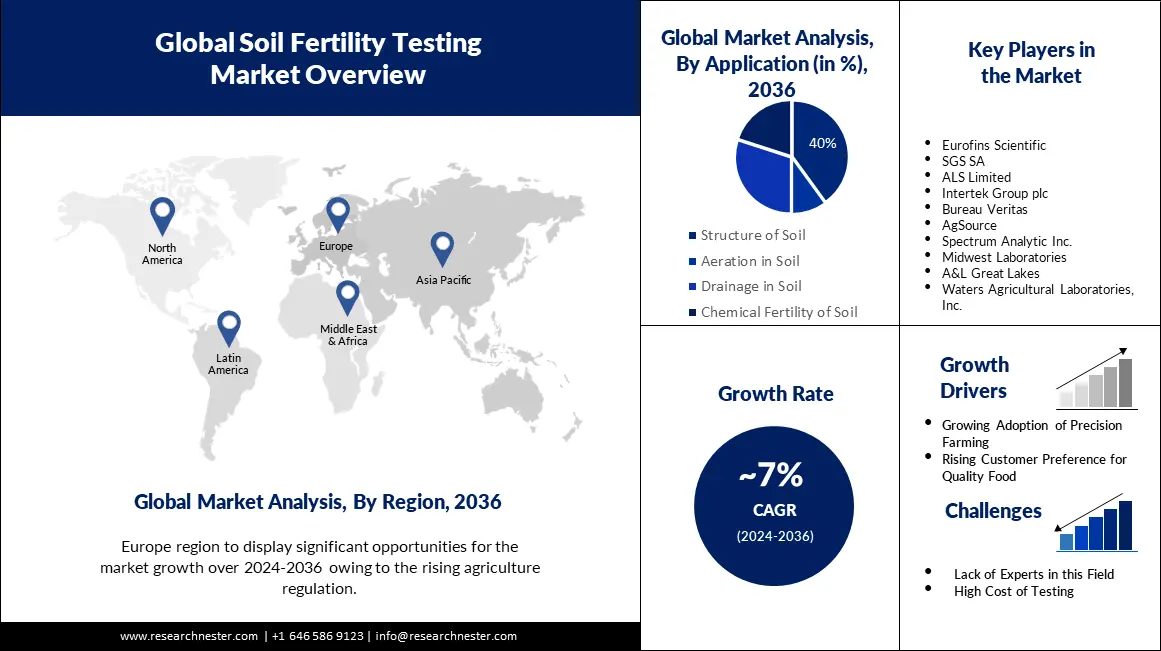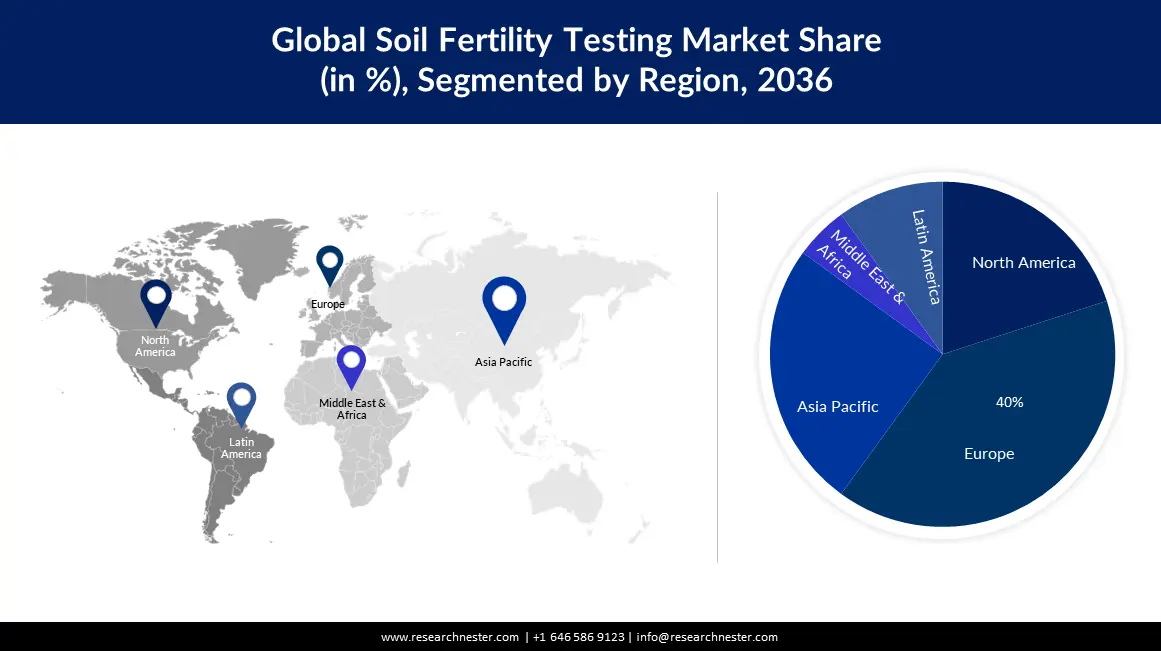
Soil Fertility Testing Market size is projected to cross USD 4 billion by the end of 2036, expanding around 7% CAGR during the forecast period, i.e., 2024 – 2036. In the year 2023, the industry size of soil fertility testing was about USD 1 billion. The growth of the market is set to be dominated by growing soil degradation all across the world. Every five seconds, a soccer field's worth of soil is lost to erosion, and by 2050, it's predicted that about 89% of the planet's soils will be degraded. Current soil deterioration is mostly caused by phenomena including loss of organic carbon, increasing salt content, compacting, acidification, and chemical contamination.
Moreover, increasing mineral extraction, military operations, industrial waste management, wastewater treatment from households, farming, animal breeding, and the construction of urban and transportation infrastructure are some of the most frequent causes of soil pollution brought on by human activity. Hence, the need to test soil fertility is growing which is pushing market expansion.

Challenges
|
Base Year |
2023 |
|
Forecast Year |
2024-2036 |
|
CAGR |
~7% |
|
Base Year Market Size (2023) |
~ USD 1 Billion |
|
Forecast Year Market Size (2036) |
~ USD 4 Billion |
|
Regional Scope |
|
Type (Chemical, Physical, Biological)
The chemical segment in the soil fertility testing market is poised to capture a share of about 65% over the forecast period. In order to prevent over-nutrient input into the farming system, soil chemical tests have grown into a vital monitoring tool. Chemical testing involves employing instruments to measure pH, salinity, test kits, and reagents. A chemical soil test additionally reveals the levels of important plant nutrients including phosphorus, nitrogen, potassium, humus content, accessible lime, organic matter, sulfur, and trace elements, as well as other physical characteristics including capacity, permeability, density, and pH-value. Utilizing a chemical test that determines the nutrient content of the soil for a certain yield, it is simpler to determine the amount of fertilizer needed to obtain high-quality yields.
Application (Structure of Soil, Aeration in Soil, Drainage in Soil, Chemical Fertility of Soil)
Soil fertility testing market from the structure of soil segment is expected to grow at a share of approximately 40% over the forecast period. This is due to its broad range of potential applications across multiple structures encompassing farms, gardens, neighborhoods, and industrial sites. When creating a garden or building development, it is important to examine how soil's texture, structure, and composition affect its chemical qualities.
Our in-depth analysis of the global soil fertility testing market includes the following segments:
|
Type |
|
|
Application |
|
|
Method |
|
European Market Forecast
The soil fertility testing market in Europe is set to gather a share of about 40% over the projected period. This growth of the market in this region could be owing to rising agriculture regulations. For instance, the EU has launched rules for organic production and labelling of these organic products which was expected to be implemented in 2022. For Organic farming, according to this EU legislation, the farmer should maintain the natural fertility of the soil and enhance its life. Hence, with this the need for soil fertility testing is growing.
APAC Market Analysis
The Asia Pacific soil fertility testing market is also expected to grow over the coming years. The demand for food is growing in this region, and on the other hand, the availability of land for production is not enough to satisfy this demand. As a consequence, the adoption of soil fertility testing is growing further giving scope for the treatment of soil which is found infertile.



Author Credits: Shivam Bhutani, Anil Kumar
FREE Sample Copy includes market overview, growth trends, statistical charts & tables, forecast estimates, and much more.
Have questions before ordering this report?